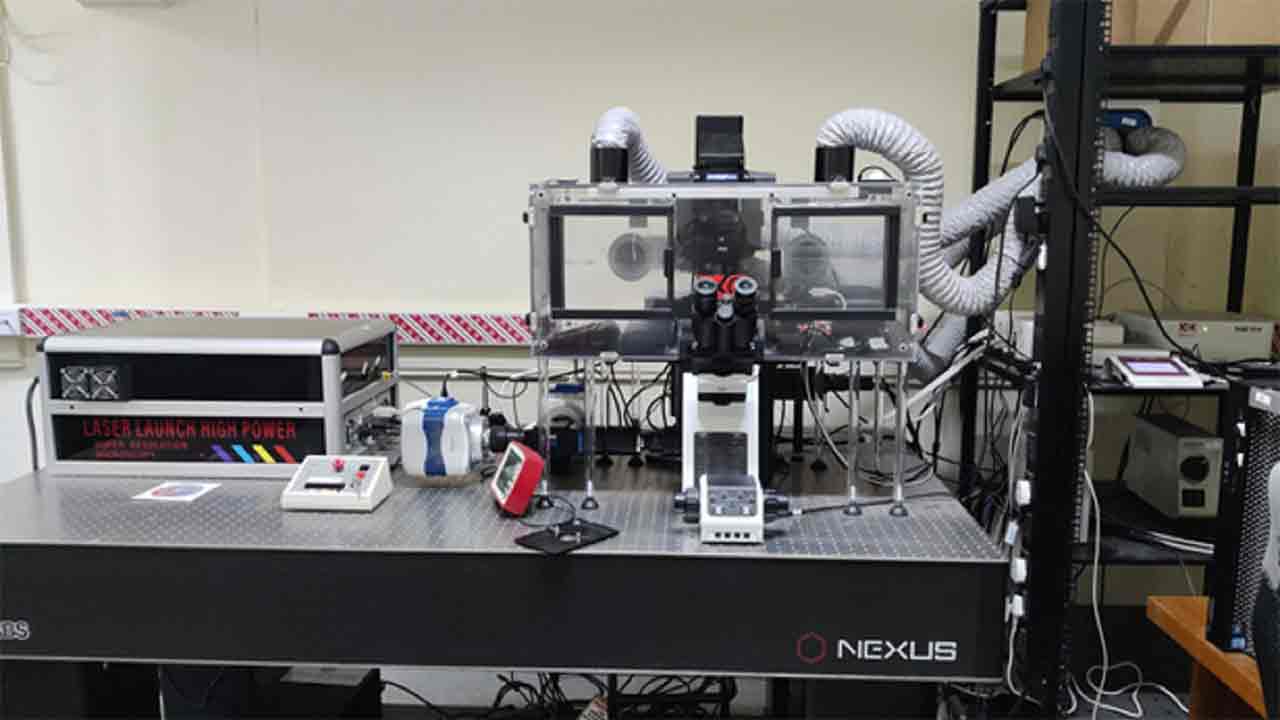Science & Technology, India (Commonwealth Union) – Microscopy has always played a central role in a variety of scientific fields, as the greater visibility into detail led to further insights into occurring’s particularly in tiniest structures such as cells.
Researchers from the Indian Institute of Science (IISc), in a recent study demonstrated the way brain-inspired image sensors capable of going over the diffraction limit of light to find miniscule objects like cellular nanoparticles not visible in present microscopes. Their novel technique, mixing optical microscopy with a neuromorphic camera as well as machine learning algorithms, in a significant move that helps identify extremely tiny objects lesser than 50 nanometers in size. The findings appeared in Nature Nanotechnology.
The emergence of the optical microscope, has had scientists aim to overcome a barrier known as the diffraction limit, indicating that the microscope is unable to distinguish between 2 objects if they are lesser in a certain size which is typically 200-300 nanometers. Their moves have mainly focused on either adjusting the molecules being imaged, or enhancing illumination strategies, where certain areas led to the 2014 Nobel Prize in Chemistry. “But very few have actually tried to use the detector itself to try and surpass this detection limit,” explained Deepak Nair, Associate Professor at the Centre for Neuroscience (CNS), IISc, as well as the corresponding author of the study.
Some key features the new device has in comparison to conventional cameras is that it measures around 40 mm in height, by 60 mm in width, by 25 mm in diameter, where it weights around 100 grams. The neuromorphic camera utilized in the study is an imitation in the way the human retina changes light into electrical impulses, and has many benefits when compared to conventional cameras. The researchers further indicated that for a normal camera, every pixel catches the intensity of light falling, during the complete time of exposure that the camera focuses on the object, and all these pixels are banded together for the reconstruction of the image of the object. In neuromorphic cameras, each pixel engages independently and asynchronously, forming events or spikes only as there are alterations in the intensity of light falling on that pixel. This produces scares amounts of data when contrasted with traditional cameras, which gathers each pixel value with a fixed rate, in any case whether there is any alteration in the scene. The way the neuromorphic camera works is similar to the way the human retina functions, permitting the camera to “sample” the atmosphere with an increased temporal resolution, as it is not restricted to a frame rate similar to normal cameras as well as performing background suppression.
“Such neuromorphic cameras have a very high dynamic range (>120 dB), which means that you can go from a very low-light environment to very high-light conditions. The combination of the asynchronous nature, high dynamic range, sparse data, and high temporal resolution of neuromorphic cameras make them well-suited for use in neuromorphic microscopy,” said Chetan Singh Thakur, Assistant Professor at the Department of Electronic Systems Engineering (DESE), IISc, and co-author.
The present research had the, the group utilize their neuromorphic camera to spot individual fluorescent beads lesser than the diffraction limit, while shining laser pulses in high and low intensities, as well as gaging the changes in the fluorescence levels. As the intensity is elevated, the camera gathers the signal as an “ON” event, while an “OFF” event is indicated when the light intensity is lowered. Data collected from these events were banded together to reconstruct frames.
The team further indicated that this approach can, be applied in specific tracking and learning stochastic procedures in biology, chemistry and physics.







